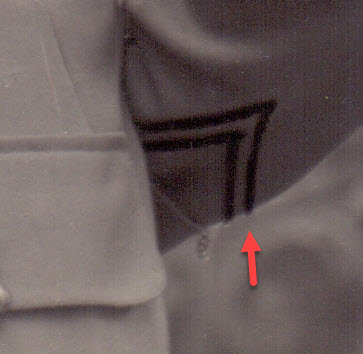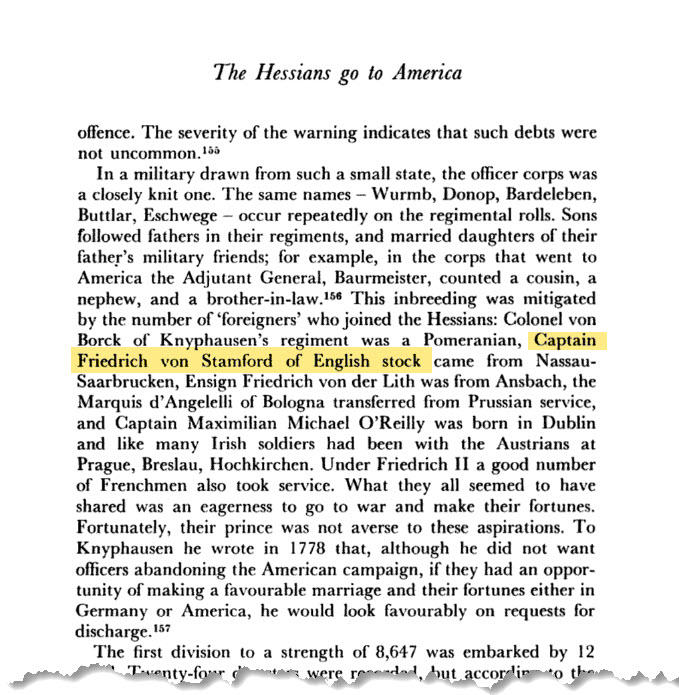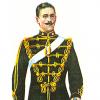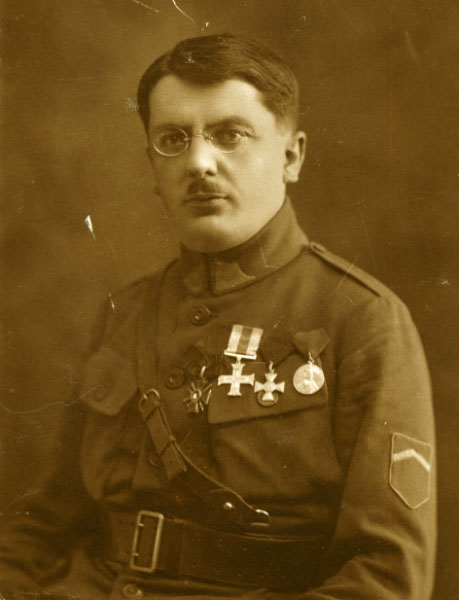-
Posts
574 -
Joined
-
Last visited
-
Days Won
2
Content Type
Profiles
Forums
Blogs
Gallery
Events
Store
Posts posted by Trooper_D
-
-
4 hours ago, Martin2 said:
why am I telling you this and laying myself wide open to doubtless abuse?
as a warning to anyone who thinks they can in some way enhance a piece, DONT DO IT!!!!
Kudos to you, Martin, for fessing up and offering the unwary a salutary lesson! In fairness, it can't be said enough times.
0 -
3 hours ago, Stuka f said:
could some one en-light me on what the badge under the regimental badge could mean.
It's the maker's name plaque, Stuka. If you google < haig "london & aldershot" > you will see many other examples.
0 -
9 hours ago, medalworld said:
all in a Cravanzola, Roma, green case of issue with gold imprint of the Order arms on top.
May we see a photo of the Order's arms, please, as this may give the heraldically-minded a clue?
0 -
38 minutes ago, Signalcorps45 said:
Dave,
Thank you for taking the time to post all this information.
Dean
Dave
As Dean said - and thank you also for giving your insights into the complexity of interpreting these rolls
 0
0 -
3 hours ago, Dave Danner said:
The exact number is unknown, though we have a fairly good estimate. For World War I, Volle has 1504 and Roth has 1479 awards.
Roth's list was missing a few late war awards which were not gazetted in the Staatsanzeiger. Since I have the actual roll and not just the Staatsanzeiger, I have added 50 more late-war awards not in Roth, which would be 1529 in total. However, I cannot be certain if Roth's 1479 was correct (some awards might have been mis-listed), so maybe the actual number is somewhere between Volle's 1504 and Roth/Danner's 1529.
Dear Dave
Would you be kind enough to clarify something for me? You have the roll of the Order but you also state that the exact number of awards is unknown. Does this indicate that some genuine awards never made it onto the roll (because of war-time conditions, perhaps?). If not on the roll, how do we judge an award to be 'genuine'?
A couple of subsidiary questions, if I may: who maintained the roll and when was the last entry?
0 -
What indicates to you that these might be military rather than civiliam, Jurgen, please?
0 -
1 hour ago, MonteSanto said:
so if there is an interest for Austrian bundesheer of the interwar period, I can send some pictures within a few days (due to a busy week).
I, for one, would be very interesting to see information about uniforms for this period, MonteSanto, and I am sure that I am not the only one who will look forward to your photos, as and when you have time.
0 -
6 hours ago, peter monahan said:
I can't make anything of the 'rearing horse', if that's what it is, but I'm not a hand gun enthusiast so my knowledge of same is shallow.
Colt trademark?
0 -
3 hours ago, The Prussian said:
Hello Trooper!
I really don´t know... If it is drawn, it´s not on my photo. Maybe upon the negative??? I also thought the chevron and/or the symbol is drawn. I know there are several unofficial TSF signs like this one in the photo below photo, taken from this book:
Thanks for the clarification. I also wondered about the chevrons but, in the full size version, I can convince myself that I can see that they are three dimensional - in other words, that they are made of braid or similar.
 0
0 -
Andy
Has the TSF symbol been drawn onto the photo with ink or onto the tunic? Or do we think that it is some kind of crude stitching onto the sleeve of the tunic?
I also note that he has 'procured' a British Sam Browne belt from somewhere!
0 -
Cazack
The official history of the HAC in WW1 - The Honourable Artillery Company in the Great War, edited by Maj. G. Goold Walker (London: Seely, Service & Co, 1930) - indicates that the 2nd Battalion only went to France, as a unit, late in 1916. Before then, it was a feeder for the 1st Battalion, replacing men as needed.
0 -
On 01/02/2018 at 14:31, Elmar Lang said:
Well, behind the round button, there is a thin hook so, the thin chain, running behind the lapel, can be fixed to it.
Thank you for that explanation, Enzo. I have a chain configured in this way and I had more or less come to that conclusion, already. I had wanted to try it out in practice but, unfortunately, the button hole on my tailcoat's lapel is too small to allow the round end to pass through it so my understanding will have to stay at the theoretical level, pro tem.
What I did conclude from my mostly failed experiment is that the chain would hang almost straight down and that the badges would therefore hang off it rather awkwardly. Perhaps I should seek out some contemporary photographs to see how it would have been, in practice.
0 -
-
-
3 hours ago, laurentius said:
As soon as I get home I will take some pictures of the back. The purpose of the miniature shows that one has a higher grade of the order without wearing it. For example at the front officers would only wear a few medals, opposed to the vienna ball. If you only wear 2 or 3 medals you have to show people you also received higher grades, which was done with little devices like these. Another reason might be that an officer could get wounded resulting in damage to a medal, if a medal is damaged you can't wear it anymore. A cross 3rd class with a miniature are cheaper to replace than a cross 1st class. Small devices are not limited to this order, or even limited to the Austro-Hungarian empire. Examples of these small miniatures can also be found on the hungarian order of St.Stephen and the order of the Iron Crown. I have also seen examples of german ribbonbars with miniatures of the grandcrosses or of the commanderscrosses. I will attach a few examples for you.
Thank you for this useful clarification of purpose behind this practice, Laurentius.
0 -
This is a lovely looking cross, Laurentius. Might we see the reverse, as well, please? Do you know what the purpose of the miniature on the trifold was? If the holder also had the First Class award, would he not only wear that?
I hope that you have success in your for pictures from Mericka's book.
0 -
8 hours ago, Elmar Lang said:
"(...)Theirs not to make reply,
Theirs not to reason why,
Theirs but to bid and buy."For that alone, Enzo - and notwithstanding your other words of wisdom, here - yours is the post of the month, in my opinion
 0
0 -
10 hours ago, peter monahan said:
Aren't they always thrilled when we show up with our treasures? Mine is!
No!
 4 hours ago, Stuka f said:
4 hours ago, Stuka f said:She pointed it out to me! ;-)
What a wonderful wife you have, Stuka
 0
0 -
7 hours ago, Stuka f said:
Got a small left over of printing material, kept by a formal printer, ...
If there is a Mrs/Madame Stuka, was she as excited as you, when you brought this home?
 0
0 -
58 minutes ago, new world said:
Thank you, it's very informative article.
My pleasure - I learnt a lot as well.
59 minutes ago, new world said:To me the bar on the medal looks like it says 1915, although it could be 1913, as the photo is not detailed enough.
I agree with you that it does look like 1915.
11 minutes ago, Graf said:However i managed to zoom the picture and the Date is 1913 which is the correct year for the Balkan Allies War ( or the Second Balkan War as it is known in Bulgaria)
Thanks, Graf ,for your confirmation.
0 -
9 hours ago, new world said:
Wow, excellent bar and minis group!
I puzzled by the minis group. I think it was to a British medical officer for merits during WWI. Red Cross medal bars say 'Balkan Allies War 1915 - Bulgaria', however Bulgaria was not part of Allies(Serbia, Russia, France, the United Kingdom, Italy, Belgium and the US), it actually fought against Allies on the side of Central Powers (Austria-Hungary, Germany, Bulgaria and the Ottoman Empire).
How come this British officer received war time awards from the enemy?
I think that this page helps clear this up, New World:
http://www.redcross.org.uk/en/About-us/Who-we-are/Museum-and-archives/Collections/Medals-and-badges
wherein it states that "[t]he medal was awarded to members of the British Red Cross units who served in Bulgaria, Greece, Montenegro, Serbia or Turkey during the Turco-Balkan war (1912-1913) or the Balkan Allies war (1913)."
Note that the Balkan Allies War was in 1913 not 1915, in which case, being before WW1, a British medic would be a neutral and hence he could be recognised for duties performed in Bulgaria.
0 -
Gentlemen
The correct colour appears to have been resolved but we haven't addressed Andrei's question as to what material should be used. I am guessing that a course, wool cloth would be correct. Has anyone a better idea?
0 -
On 11/12/2017 at 19:17, VtwinVince said:
Very interesting Schnalle, Claudio. I presume this officer had some Anglo background, judging from his name?
This extract appears to support that thesis

Source: Link to Google Books
and this German language web page appears to explain the origins of the family,
https://de.wikisource.org/wiki/ADB:Stamford,_Heinrich_Wilhelm_von
0 -
12 hours ago, tifes said:
It was quite common with old German veterans to preserve the original and unique pieces and use some cheap replacement for everyday wear instead.
You make a very important point, Tifes, which, as collectors, we should always bear in mind when considering the authenticity of medal bars.
As you have shown, it is quite possible for a medal bar to be legitimate - and attributable to a named individual, perhaps - yet contain copy medals; the originals having been kept in their boxes in a safe at the owner's home. Perhaps too many bars are dismissed as being 'fakes' because some (or all) of the component medals are obviously copies.
I suppose this comes down to what we consider 'authenticity' to mean when we discuss medal bars.
0






Austro-Hungarian case/etui
in Austro-Hungarian Empire
Posted
Rather than being the boxes in which the original, awarded medals arrived in, might they be the boxes in which a replacement medal bought from a military tailor would be sold in?